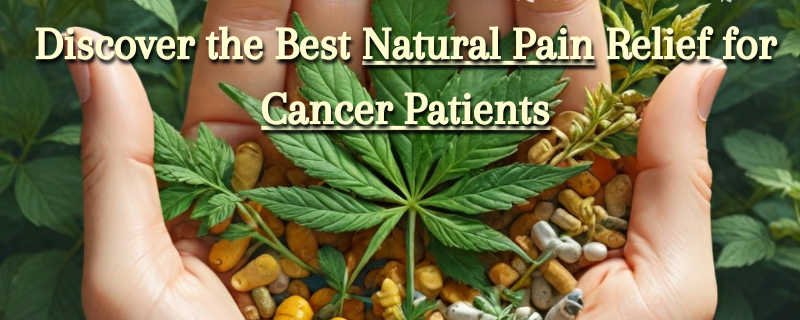DIY Natural Cold & Flu Syrup: Five Powerful Remedies to Keep You Healthy
When cold and flu season strikes, it’s natural for many of us to reach for over-the-counter medications like common over-the-counter medications such as Tylenol, Advil, Robitussin, NyQuil, or TheraFlu to relieve symptoms. While these medications can be effective, they often come with side effects such as drowsiness, dry mouth, stomach upset, and sometimes even worse. Fortunately, nature provides us with potent, effective cold and flu remedies that can help prevent illness and soothe symptoms without these side effects. In this article, we’ll explore five DIY natural cold and flu natural remedy syrups like: elderberry syrup, fire cider, echinacea tea, garlic and honey syrup, and ginger and turmeric tea. Each of these remedies has been used for centuries to boost immunity, fight infection, and provide comfort during illness. 1. Elderberry Syrup: A Sweet Immunity Booster Historical Context and BenefitsElderberry (Sambucus nigra) has been a staple in traditional medicine for thousands of years, with its use dating back as far as ancient Egyptian time. It was used by Native Americans for infections and by Europeans as a remedy for flu and colds. The berries are very rich in antioxidants, vitamins A, B, and C, and flavonoids, which helps boost and support the immune system. Elderberry syrup is a favorite natural remedy for preventing and treating colds and the flu. It’s particularly known for reducing the duration and severity of symptoms, similar to how TheraFlu is used to manage symptoms of the flu. Color SignificanceElderberries are deep purple, and at a really quick glance can almost look black. This dark color is where you and I benefit from elderberries high concentration of anthocyanins, which are powerful antioxidants that give the berries their antiviral properties. In traditional medicine, darker-colored berries and plants are often associated with potent healing qualities, particularly for the immune system. How It WorksThe anthocyanins are one of the many compounds contained in elderberries, which have antiviral properties. These have been shown to block the flu virus from entering and replicating in human cells; thus, this makes elderberry syrup an effective preventive measure and a treatment that reduces symptoms. Preparation Method Safety NoteRaw elderberries can be toxic and should be avoided, so always cook them before use. This neutralizes the toxic compounds and makes the syrup safe for consumption. Fire Cider: The Spicy Immune Booster Historical Context and BenefitsFire cider is a spicy, tangy tonic with roots in folk medicine. Popularized in the 1970s by herbalist Rosemary Gladstar, fire cider combines powerful immune-boosting and anti-inflammatory ingredients, making it a go-to remedy for cold and flu prevention. It can serve as a natural alternative to decongestants found in over-the-counter medications like Robitussin or NyQuil. Traditional cider tonics have been used since the medieval period for their warming and stimulating properties, believed to help ward off illness during cold seasons. Color SignificanceFire cider comes out vibrant yellow-orange, mainly because of the turmeric in it. Yellow represents anti-inflammation properties in turmeric, a nature-endowed spice with the capability to reduce swelling and pain amply. Further contributory factors are the red chili peppers and orange citrus, adding to the whole array of healthy phytonutrients in this tonic. How It WorksFire cider’s effectiveness comes from its blend of antibacterial, antiviral, and anti-inflammatory ingredients. Apple cider vinegar acts as a preservative and digestive aid, while garlic, ginger, horseradish, and hot peppers stimulate circulation and support the immune response. Preparation Method Safety NoteFire cider is highly potent and can be very spicy to most individuals. If you have a sensitive stomach, dilute it in water or juice before consuming. Echinacea Tea: The Herbal Defender Historical Context and BenefitsEchinacea has been used for centuries by Native Americans to treat infections and various wounds. It was then known as the coneflower. The plant gained popularity in the 19th century among American settlers for its medicinal properties. Echinacea is now widely recognized for its immune-boosting properties and is a popular remedy for preventing and shortening the duration of colds, similar to how products like Airborne and Emergen-C are marketed to boost immunity and prevent illness. Color Significance Echinacea flowers are typically a vibrant purple or pink. When discussing herbal medicine, the purple color is often associated with detoxification and protection, reflecting echinacea’s role in supporting the immune system and promoting overall health. How It Works Echinacea contains active compounds like alkamides, glycoproteins, and polysaccharides that enhance the immune system’s activity. This beautiful plant can also help to increase the production of white blood cells, which are essential for fighting off infections. Preparation Method Safety NoteEchinacea is generally safe for short-term use. People with autoimmune disorders or allergies to plants in the daisy family should consult a healthcare provider before using echinacea. Garlic and Honey Syrup: The Ancient Remedy Historical Context and BenefitsNow lets talk garlic shall we? Garlic has been used as a natural remedy for thousands of years across various cultures, including the Egyptians, Greeks, and Chinese. Combined with the amazing powers of raw unprocessed honey, another ancient healing food, this syrup is a powerful antibacterial and antiviral remedy. The combination mirrors the natural antibiotic effect similar to the relief provided by over-the-counter remedies such as Vicks VapoRub or Mucinex for treating colds and respiratory infections. Color SignificanceGarlic is typically white, symbolizing purity and its powerful cleansing properties. Honey’s golden color represents its nourishing and soothing properties, making this combination a symbol of health and vitality. How It WorksGarlic contains allicin which is a compound with strong antimicrobial and immune-boosting properties. Honey has antibacterial and soothing properties, making this combination excellent for treating coughs and sore throats and enhancing overall immune function. Preparation Method Usage: Take 1 teaspoon every few hours at the first sign of a cold or cough. The syrup can also be added to tea or warm water. Safety Note Garlic can be potent and may cause digestive discomfort in some individuals. Start with small amounts to see how your body reacts. People taking blood-thinning medications should consult a healthcare provider before using garlic supplements. Ginger and …
Read more “DIY Natural Cold & Flu Syrup: Five Powerful Remedies to Keep You Healthy”




